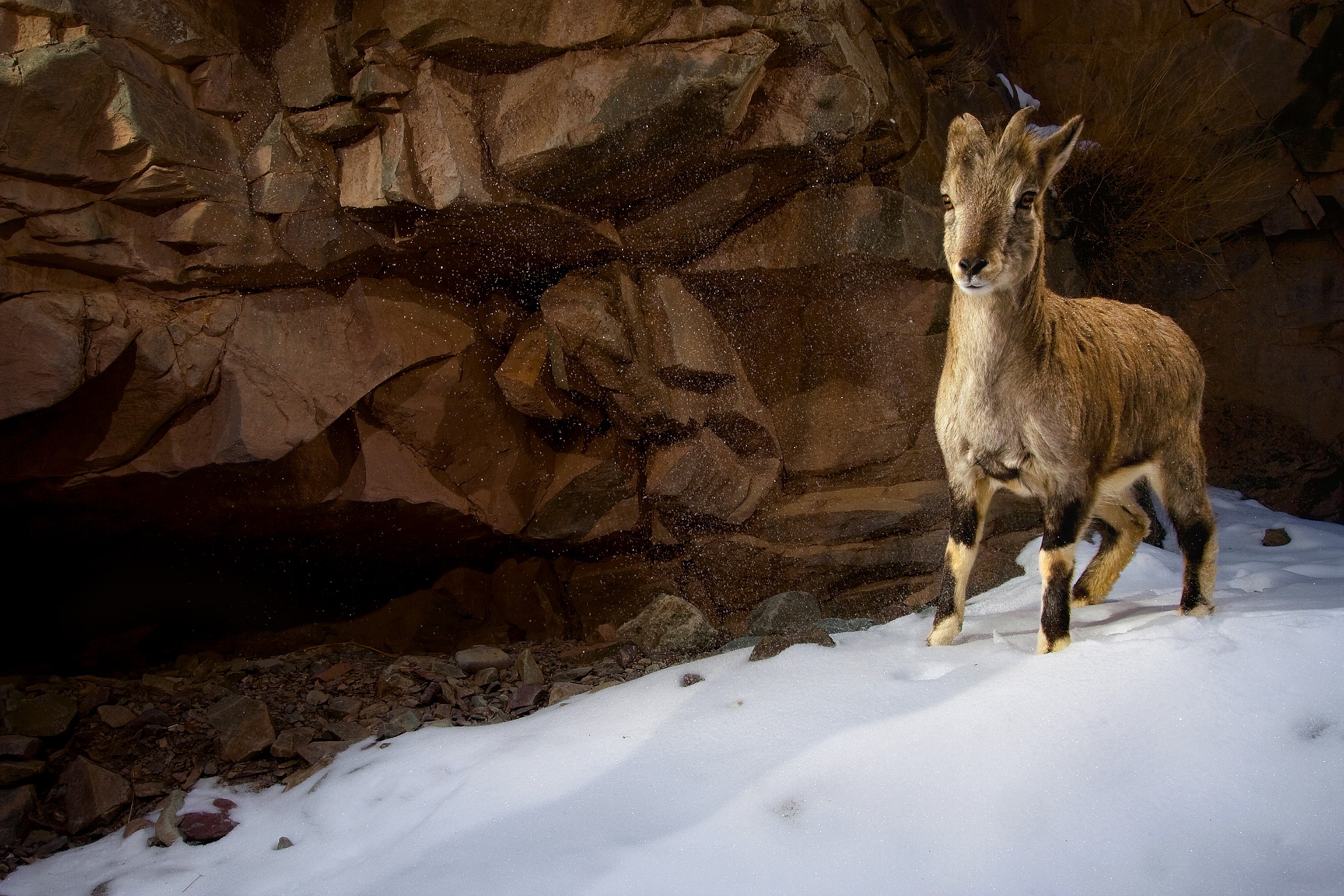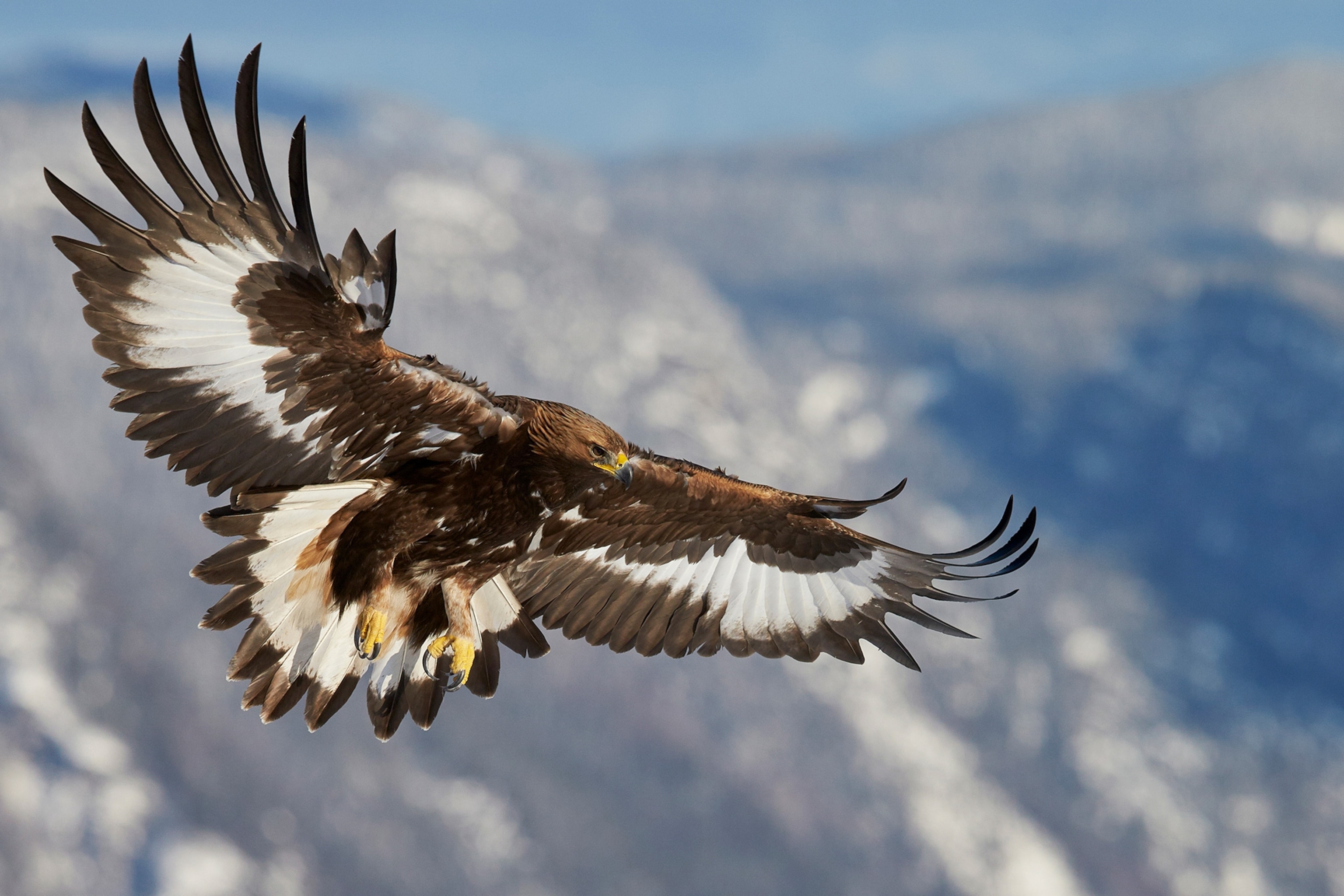These animals thrive in extreme mountain conditions—here's how
It’s steep, it’s cold, and there’s little food, yet mountain habitats support a wide range of animals.
Mountains are unforgiving habitats. With low oxygen levels, scarce food resources above the tree line, and extreme weather, animals at high elevations must maintain a precarious balance with the elements to survive.
Animals that thrive in hostile mountain habitats have developed certain adaptations. The snow leopard, regularly found at elevations between 11,400 to 16,400 feet, has a genetic adaptation that enhances its ability to absorb oxygen into the bloodstream.
Mountain hares change color depending on the season for camouflage: white fur for the winter and a light ginger coat for when the snow has melted. Mountain goats too have thick white coats during the winter—for warmth and for camouflage—that they shed during the summer.
Other mountain-dwelling species like geladas, monkeys that live in the mountains of Ethiopia, have figured out how to survive in a habitat with few sources of nutrient-rich food: They eat grass, the only primate to do so.
Although the landscape may be harsh, it’s not the only threat to alpine animals.
“Farmers aren’t very friendly when snow leopards kill their livestock,” says Rodney Jackson, director of the California-based nonprofit Snow Leopard Conservancy. As farming and herding encroaches on snow leopards’ habitat and depletes their prey, the leopards are turning to livestock for food and are being killed in return.
Climate change, too, is making alpine environments even tougher to survive in.
In many mountainous areas, climate change is causing an increase in precipitation. In northern areas, this means an increase in snow as well as rain. This can be problematic, and sometimes deadly, for foraging herbivores when the rain freezes and creates a hard layer on top of deep snow.
“In recent years we’ve had very high snow cover, and [the frozen rain] made it hard for the reindeer to dig through and reach the lichen,” says Robert G. Björk, an associate professor at the University of Gothenburg in Sweden.
Additionally, as the mountains warm and the snow melts, vegetation is expected to expand into higher elevations. As the vegetation moves in, so will animals previously restricted to living in lower elevations where plant life was more plentiful. For the mountain hare, this means new hare species it will have to compete with and new predators, like the red fox, to avoid.
For predators like the golden eagle, increased vegetation will disrupt hunting and breeding practices. Golden eagles have already been documented migrating north earlier in to take advantage of a longer breeding season. However, some researchers are concerned that the increased vegetation will affect their ability to find prey, as their hunting grounds are normally more barren.
Understanding how animals have adapted to these harsh mountain environments and how they’re faring as the habitats are transformed by global warming is hard. The field sites are remote and difficult for scientists to reach even in good weather. Throw in a snowstorm or rockslide, and researchers might lose access to a study site for months, seriously hampering their ability to collect data about mountain environments and animals.












